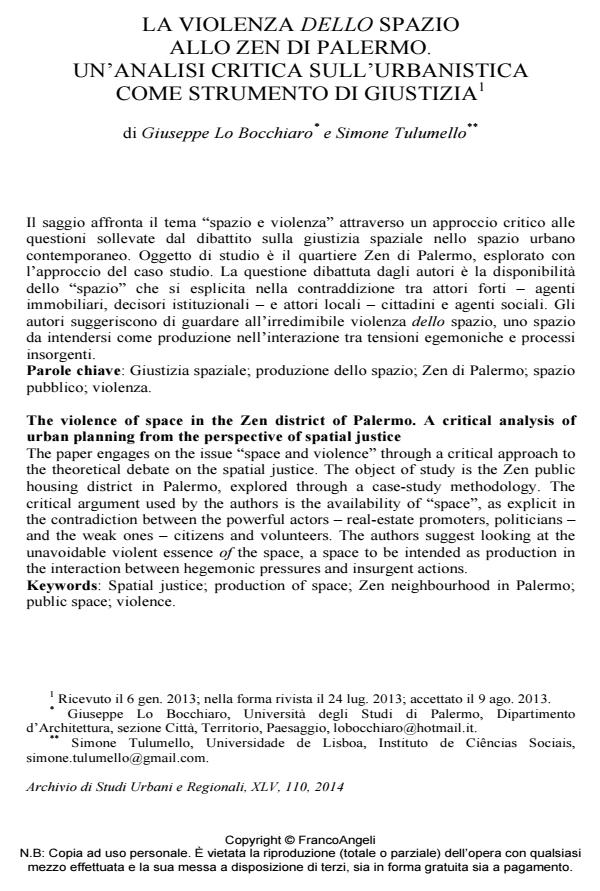The violence of space in the Zen district of Palermo. A critical analysis of urban planning from the perspective of spatial justice
Journal title ARCHIVIO DI STUDI URBANI E REGIONALI
Author/s Giuseppe Lo Bocchiaro, Simone Tulumello
Publishing Year 2015 Issue 2014/110
Language Italian Pages 22 P. 73-94 File size 222 KB
DOI 10.3280/ASUR2014-110006
DOI is like a bar code for intellectual property: to have more infomation
click here
Below, you can see the article first page
If you want to buy this article in PDF format, you can do it, following the instructions to buy download credits

FrancoAngeli is member of Publishers International Linking Association, Inc (PILA), a not-for-profit association which run the CrossRef service enabling links to and from online scholarly content.
The paper engages on the issue "space and violence" through a critical approach to the theoretical debate on the spatial justice. The object of study is the Zen public housing district in Palermo, explored through a case-study methodology. The critical argument used by the authors is the availability of "space", as explicit in the contradiction between the powerful actors - real-estate promoters, politicians - and the weak ones - citizens and volunteers. The authors suggest looking at the unavoidable violent essence of the space, a space to be intended as production in the interaction between hegemonic pressures and insurgent actions.
Keywords: Spatial justice; production of space; Zen neighbourhood in Palermo; public space; violence.
- Una segregazione paradossale e multi-scalare: il caso del quartiere ZEN di Palermo Marco Picone, in Méditerranée /2016 pp.37
DOI: 10.4000/mediterranee.8389 - Questioning the Universality of Institutional Transformation Theories in Spatial Planning: Shopping Mall Developments in Palermo Simone Tulumello, in International Planning Studies /2015 pp.371
DOI: 10.1080/13563475.2015.1029693
Giuseppe Lo Bocchiaro, Simone Tulumello, La violenza dello spazio allo zen di Palermo. un’analisi critica sull’urbanistica come strumento di giustizia in "ARCHIVIO DI STUDI URBANI E REGIONALI" 110/2014, pp 73-94, DOI: 10.3280/ASUR2014-110006